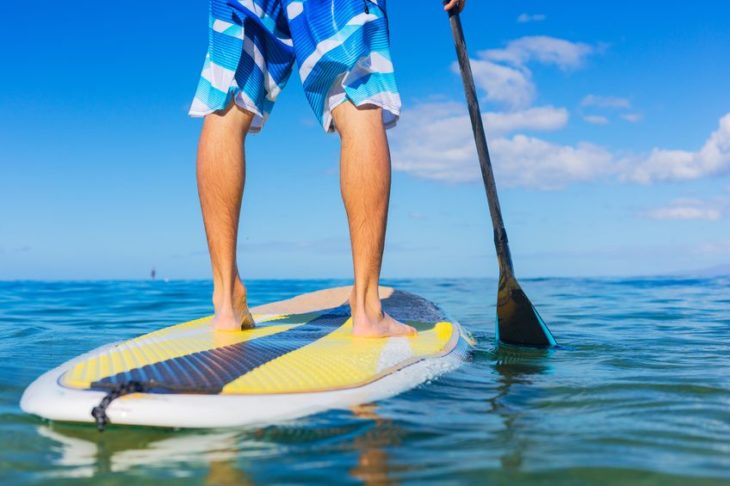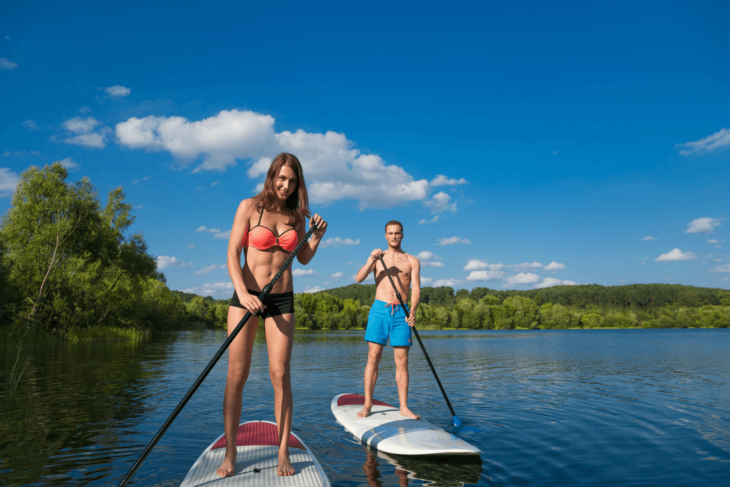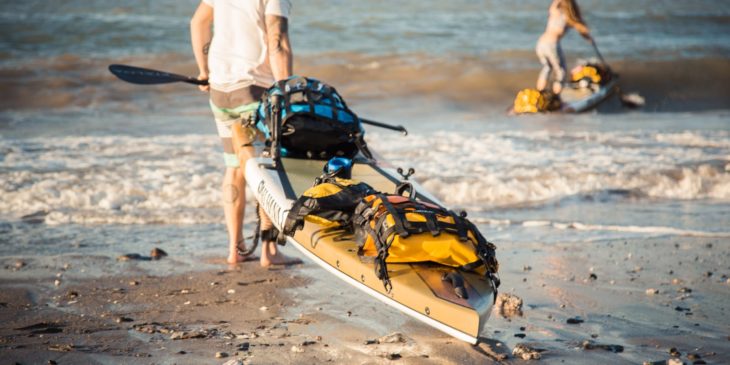Stand up paddleboarding (SUP) is a unique sport that offers something never before seen. SUP offers people the chance to head out for a relaxing afternoon of paddling on a calm lake or even catch waves in the ocean. But that’s not the only thing it offers. Many people use SUP to do yoga on the water or do a fast-paced paddle workout. But no matter your ambitions and desires, you still need a stand-up paddleboard to achieve those.
There are a few things we need to discuss before you go on the quest to choose a paddleboard for your stand up paddling.

Source: phoenix
Contents
• Hull Type
Depending on what type of paddling you’re planning to do, you can choose between eighter a planing hull or a displacement hull.
• Solid of Inflatable
The board can be eighter a solid board or an inflatable board. This is solely determined based onboard performances, portability, and storage options.
• Volume and Weight Capacity
This is where it gets tricky. According to Outside Pursuits, paddleboards must be able to support your weight and height. So a good amount of thinking should be put into the volume and weight capacity of the paddleboard in question. Having the right amount ensures good stability and paddling performance.
• Length, Width, and Thickness
And the final factor to discuss is the dimensions of a stand-up paddling board. The length, width, and thickness play a key role in determining how it handles water.
Stand Up Paddle Board Fins

Source: Digital Trends
According to SUP Boards Review, fins are an important part of SUP. They give you stability and they add tracking. There are two types of paddling fins. The first ones are larger and wider and have longer front edges that track straighter and provide more stability. The second type is your smaller fins that provide more maneuverability. However, a good thing for you is that both types of fins are usually removable, so you can swap between both depending on your needs. But if you’re a beginner, then most SUP fin configurations include the following:
1. Single Fin Setup
Many SUPs include a single fin which is well secured in a finbox. A single fin offers good tracking and minimal drag, and it is your desired choice for flatware paddling.
2. 3-fin Setup
This type of fin setups is called a thruster and it promotes straight tracking on flat water. A 3-fin setup offers good control while surfing and all three fins are generally the same sizes.
3. 2+1 Setup
The perfect setup for surfing, the 2+1 setup includes a larger center fin with a smaller fin located on each side of it.
SUP Extras and Accessories

Source: REI Co-op
Like anything in this world, accessories and extras are the things that make your life easier. For SUP, there are a couple of extras and accessories you can look for such as:
• Bungee Straps
Bungee straps are also called tie-downs and they are designed for securing dry bags, clothing, and coolers while on water. They are usually located on the front or rear of the board.
• Attachment Point
Many paddling boards are designed for more than just SUP. Many boards can come with attachment points that are excellent for placing fishing rods, cameras, and more. Be aware as these accessories and extras are usually sold separately.
